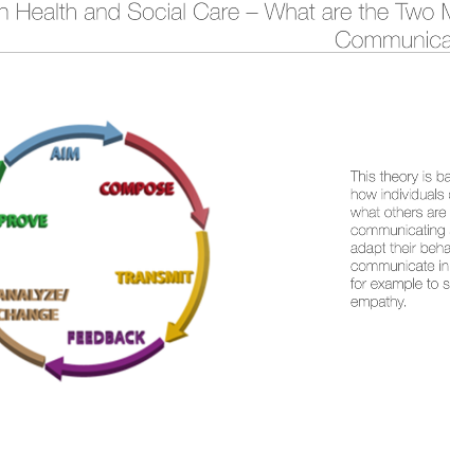Communication in Health and Social Care
Communication in Health and Social Care
Communication is a two-way process of sharing and understanding information. It is an essential part of everyday life. People communicate in a variety of ways, such as through speech, body language and gestures.
Communication is paramount in health and social care settings because professionals need to understand the needs of all individuals. A practitioner should be able to recognise a service user’s needs even if the service user can only communicate non-verbally.

What does the course cover?
- Learn about the two theories that are used within the Health and Social Care sector
- What different types of communication aids are available for service users
- What barriers are there for communication within the Health and Social Care sector

Training Outcomes
- Learn about what communication is
- Learn about the different theories used for communication within health and social care.
- Know what different types of communication is used within Health and Social Care.
Modules
- Why is communication important?
- What are barriers to communication?
- What factors influence communication?
- What are the two main theories of communication?
- What are the three types of communication in health and social care?
Test & Certification
At the end of the communication for health and social care training, you will be given a multiple-choice test. The required pass rate is 80%. You will be able to download and print a digital certificate on completion of the course. This certificate is valid for three years.
Duration
The communication for health and social care training will take approximately 20 minutes to complete, excluding the final exam.
Complete your training from wherever you like, whether at home or in the workplace. Once signed up, you’ll have 24/7 access to the course.











